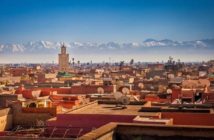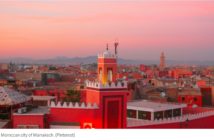The New York Times
The original concrete buildings combine Brutalist materials with regional elements. The wooden flooring and the buildings in the background are more recent additions. CreditCreditAndreea /Muscurel
By Alexandra Lange
When Aziza Chaouni was a girl, she spent holidays with her grandmothers at Sidi Harazem, a thermal bath complex built next to an ancient magnesium-rich spring about seven miles east of Fez, Morocco.
One grandmother loved the new complex, designed by Jean-François Zevaco and completed in 1960, soon after Moroccan independence. “She was born and raised in Fez, in the old city, and she was very keen on alternative medicine,” said Ms. Chaouni, a professor at the John H. Daniels Faculty of Architecture, Landscape and Design at the University of Toronto and principal of Aziza Chaouni Projects. “She was amazed by the new facilities. We would stay in the bungalows that were modeled after the medina — as a child it was like a maze.”
The other grandmother was nostalgic for the pre-modern Sidi Harazem. The springs, set in an arid mountain range, had drawn visitors since the time of the Romans, and Sultan Abu el-Hassan built a 14th-century shrine to Sidi Harazem, a Sufi theologian, on a nearby plateau. “They used to wake up at 5 a.m. and walk from Fez, then simply camp. Locals would offer space in their own homes,” Ms. Chaouni recalled. “For people who lived in Fez, it was their green lung.”


Built in concrete with faceted columns, deep overhangs, and a circular outdoor pool shaded by a disk of concrete that seems to float, Mr. Zevaco’s buildings, which include baths, dozens of bungalows, covered markets and a hotel, combine Brutalist materials with regional elements, including bands of blue mosaic tile and copper work. The newly established Moroccan government wanted to attract Western tourists to the country, while preserving popular national sites. Mr. Zevaco’s design was intended to appeal to both types of visitors, with the bungalows and public spaces reminiscent of traditional buildings, and the elevated hotel and cantilevered shade structure representing the most advanced international architecture.







